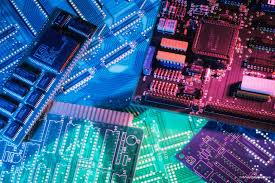Introduction to Semiconductors


Diode: When a p-type crystal is placed in contact with n-type crystal so as to form one piece, the assembly so obtained is called p-n junction or junction diode. The surface of contact of p and n-type crystals is called junction. In the p-section, holes are the majority carriers while in n-section, the majority carriers are electrons. Due to electron-hole recombination at the junction, the small region in the vicinity of the junction which has been depleted of free charge carriers and has only immobile ions is called depletion region. And, p.d. across the region is called the potential barrier.
Note: P-N junction diode is neutral but still has non zero charge density at the depletion region.
Characteristics curve of a diode :
Consider a circuit consisting of an adjustable dc voltage source in series with a resistor and diode. When the applied voltage is zero, there is no current. As we increase the voltage, electrons begin to flow. Because of the series combination, the current is small in all parts of the circuit. This current increases slowly at first. When the applied voltage is approximately equal to the barrier potential, the current increases rapidly. Knee voltage(Vk) is that voltage that separates low forward current from the high forward current.
Fig-1 shows reverse bias. If the applied voltage is zero, no current flows. When we increase the voltage a small current appears. When the reverse voltage is excessive, a few thermally produced free electrons can reach high speeds and dislodge other electrons from the valence band. Once free, the valence electrons(now free electrons) accelerate because of the strong electric field and collide with other valence electrons. The process ends in an avalanche with the huge number of valence electrons breaking loose from their orbits and becoming free electrons. The voltage where such an avalanche effect occurs is called break down voltage (Vb).

fig 1. VI graph for forward and reverse bias of P-N Junction diode.